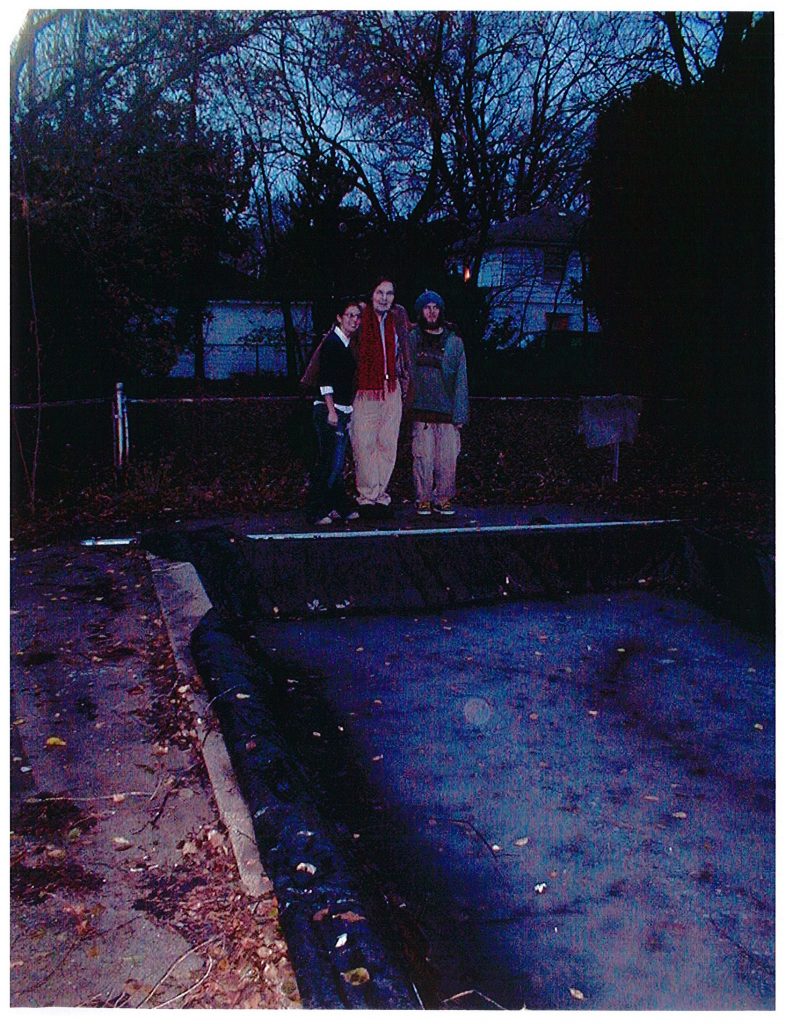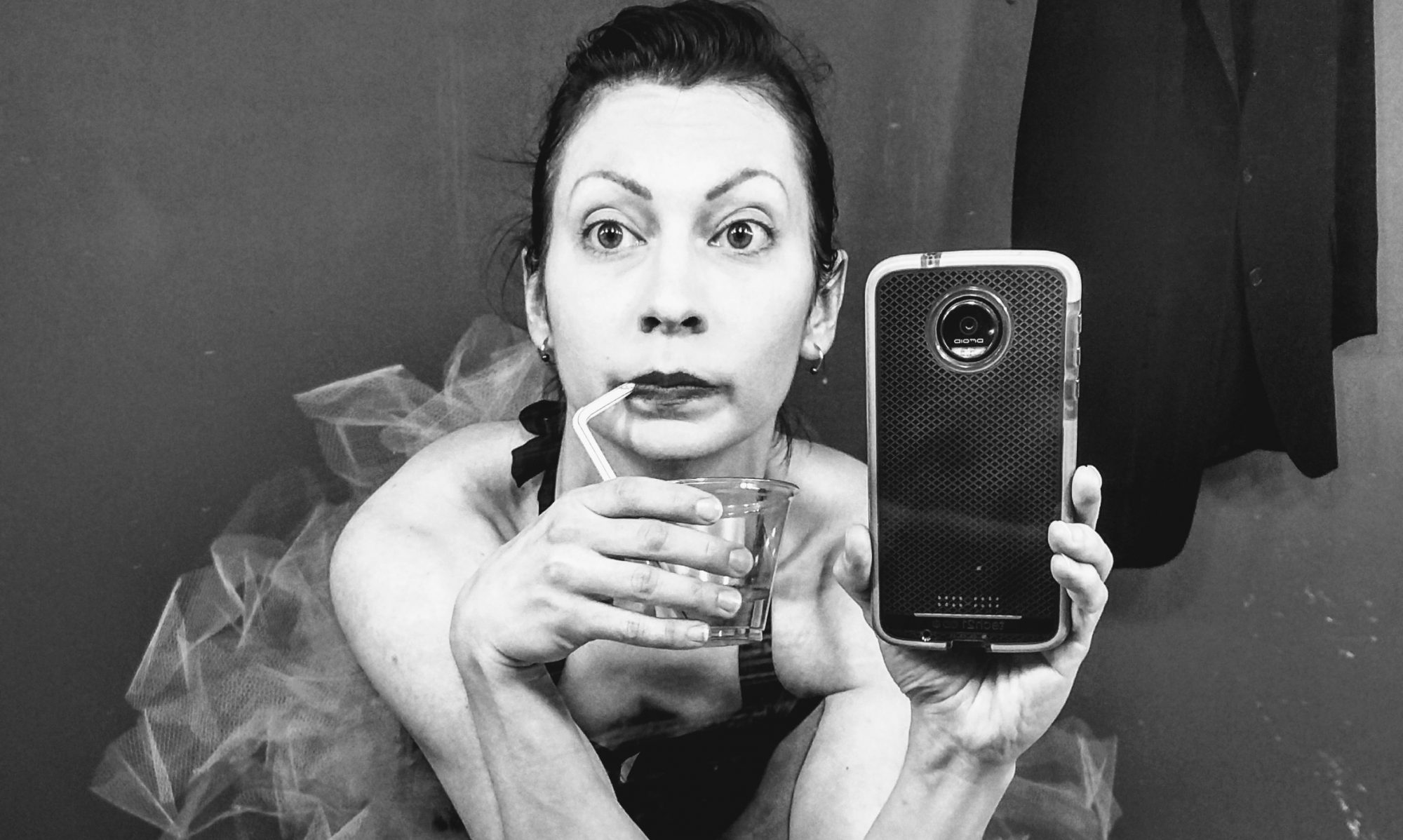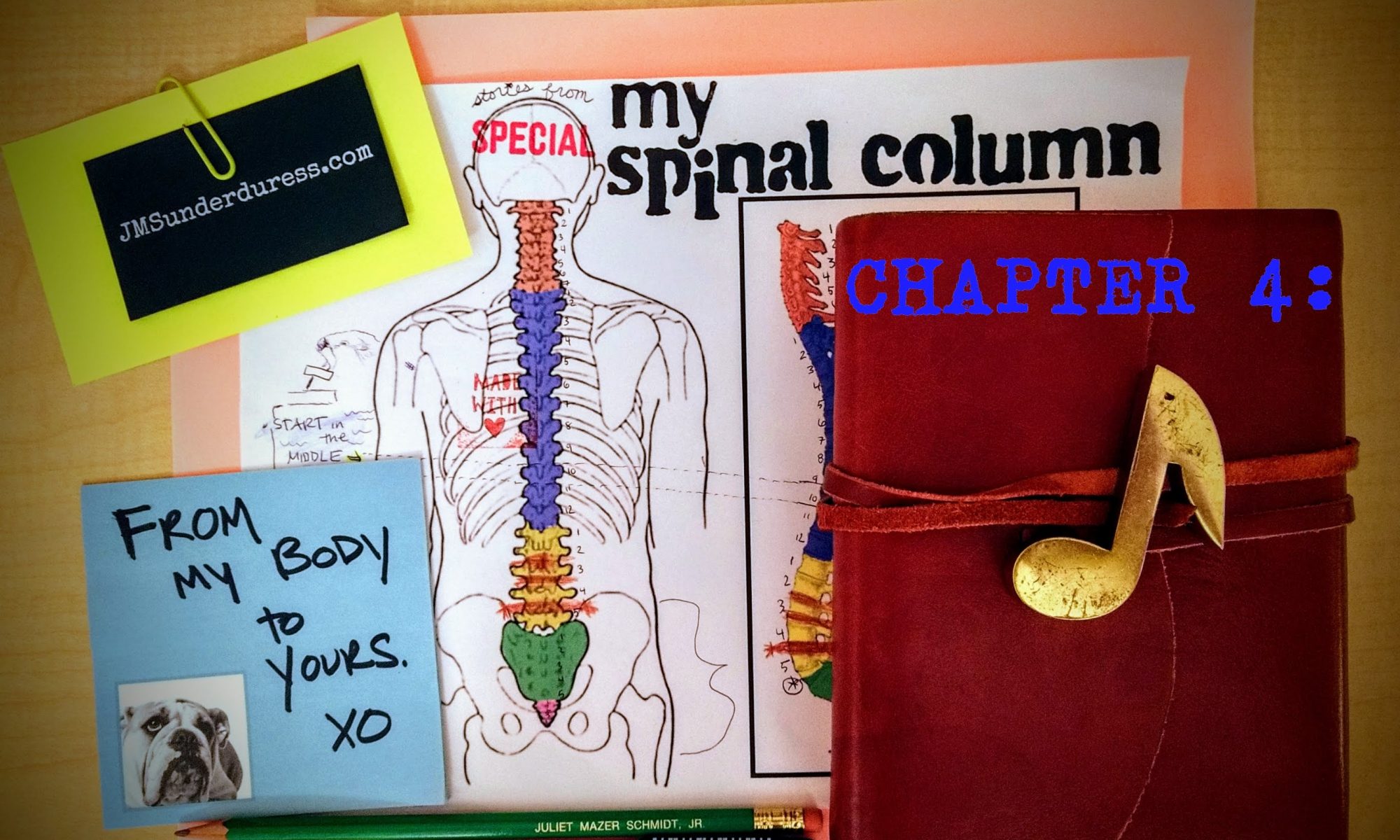MY SPINAL COLUMN is an ongoing series. To start at the very beginning (a very good place to start), click HERE.
The sound of a gunshot still stirs within me an urge to swim.
Driven to dive into a pool off another’s trigger pull: a peculiar cue my brain continues to preserve, practically two decades post-retirement from competitive swimming – longer since our city’s outdoor league launched races by cap gun. Not my only reaction to gunfire, nor my first, it is merely a friendly favorite: I long not for the shot itself, but the charmed chain reaction it can set in motion – when big toes spring forth from starting block’s grip and, for the briefest moment, my body finds flight.
The same shoulders, hips, and torso that dashed my dancer dreams served extremely effective in water. While I may have been back-lined in ballet, competitive swimming got my picture in local newspapers, name engraved on every possible trophy in my team’s arsenal; a fat stack of blue ribbons and “gold” medals accumulated on my bedroom dresser – and the piano – and my parents’ bedroom dresser. (To the frustration of other parents, I went years without losing a single race; for me, this merely provided balance to the perpetual pirouette struggles I faced at the studio.)
I’ve reached a startling point in my life where summers not spent poolside now outnumber the many that did. As gunshots and firecrackers continue to punctuate the percussion of Uptown nights, pandemic preventing my usual lap swimming routine, I cling to this stubborn sonic connection that rewinds my mind to Michigan swim meets.
Laned pools were my battlefield of choice: fought one race at a time, wearing the simplest wardrobe, without pressure to cloak the work in beauty. I let pool water baptize my body’s optics, freeing up bandwidth to find ideal tempos for the choreography at-hand. Water was my most compatible dance partner, facilitating me to impose my will through its waves; weaving the bulk of my body metrically across its surface bred my most self-assured connections, feeling lucky to find my place in the world – an Ariel (better yet, Ponyo) in reverse.
Butterfly came included with my body’s basic settings, an assertive aquatic dance step that suited my bones far better than any battement. I came to quickly grasp that this was my body’s true Special Part, my flight frequency a secret cipher locked deep inside my joints. Unwilling to risk the possibility of a goggle-slip off the dive, I learned to reign underwater as I had learned to dance: first by feel, then by sound – knowing a coach (or floating row of plastic rings) would step in when-needed to straighten my course. With sound waves traveling five times faster underwater, audio files bypass ears and swim straight to the skull, each swimmer privy to a unique track centered on their own stroke.
A proper arm stroke in butterfly involves forming two, (ideally) identical, inward-facing question marks, concealed beneath the water, framing head and torso as hips kick out a steady bass line: 1, 2, 1, 2, 1, 2, 1, 2… My go-to game, to distract from muscle fatigue: find the music, then fill the “space” within those two recurrent erotemes with language – what code might this race crack?
I wrote my first songs in the water, fellow competitors serving as band mates, sound waves bouncing between our bodies to build a backbeat for my butterfly’s descant.
With no blank pages to taunt, no ears awaiting an immediate answer, (nor eyes to judge it), I welcomed the weird variations that flowed fast and raw, cycling through the alphabet in rhythm with my stroke, sometimes lucky to successfully edit erratic word salad into a stirring lyric.
Some of the best luck I had as a kid involved my unfettered access to a swimming pool, a humble concrete hole in my grandparents’ backyard, located on a double-borderline between two different Grosse Pointes and Detroit. I spent substantial portions of my formative summers “entertaining” there: all were welcome, and over the pool’s 48-year existence, many accepted the invitation.
Back in the spring of 1953, as my Grandma Mazer grew my mother (anticipated that autumn), her husband arranged for the digging of a rectangle into a portion of their large yard. Grandpa Mazer, a former Varsity swimmer (just one of his many notable titles), craved a family pool; according to our folklore, a very young Grandma Mazer once encountered a gnarly batch of bloodsuckers on Belle Isle (leeches, not vampires) that fueled a fear of swimming to last the rest of her life. Grandma Mazer had pianos to play; Grandpa got his pool – and used it to provide hundreds of guests positive aquatic experiences, sans parasites.
Present for the pool’s final seventeen summers, I never once witnessed my Grandma Mazer enter it, not so much as a submerged toe. Her music, however, underscored from the living room.
I was blessed with a dreamlike decade of summer lunchtime swims with Grandpa Mazer, who would cannonball and splash around on breaks between court appearances, my brother and I killing time between swim team practices. Uncle Bill, Mom’s younger brother, made regular appearances during his Michigan chapters – equally down to maximize wave height and invent contests, often involving acrobatic pool entrances while shooting a ball into a floating hoop. Uncle Bill had a spectacular belly flop and wasn’t afraid to deploy it for a laugh.
Dad’s shift came later in the day: together we’d wind down from “work” with a few dozen rounds of pool volleyball, dividing into teams by height – taller bodies dispatched to the deep end. Mom, forever self-conscious in a bathing suit, swam only with family and inner-circle company – though a particularly brutal heat wave could sometimes cajole her to throw on a nylon skirt and join the party.
Uncle John, Mom’s older brother, came with the night: a cane-carrying and chatty character, he lived just across Mack Avenue, on the Detroit side, relying on the pool for relief from ankylosing spondylitis. He’d crank up the heat and tell ghost stories while he stretched, steam rising from the dark water, an occasional bat flying overhead. Sometimes a storm came, an impeccably timed “act break,” sending us inside to finish – toweled torsos, popsicles-in-mouths, awaiting the story’s climax (which, spoiler alert, was often my Uncle John’s perfect, if petrifying “witch” cackle).
When all guests had departed for the night, showers taken, bathing suits hung out to dry; one by one, TVs turned to Nick at Nite, the voices of Desi Arnaz, Lucille Ball, Dick Van Dyke and Mary Tyler Moore signaling bedtime. I inherited my Uncles’ former kingdom as a summer bedroom, constructed above the carport: at the top of the stairs, a right in lieu of the left that led to the rest of the upstairs level. With windows facing both street and yard, I considered myself prime “lookout” as I pulled out paper to document the day’s events, deciding which words to preserve from the plethora that had popped into my head while under the creative influence of a pool.
It is my experience that words find a clearer order in the night, static from the world reduced to low volume on a television set, a lonely cricket – the occasional gunshot that still sends me swimming, if only in my memory.
As the July Tournament (sumo basho) concludes half a world away, Terunofuji’s heroic return to the Makuuchi Division already “yesterday’s” news in Japan, my attention stays split between fighting and dancing – and one of my current challenges encompasses both: re-writing a set of lyrics – specifically, Sarah and the Seed’s Opening.
Writing theater when theater is dark, my family far away; I can’t even get to a pool.
For now, all I’ve got is the gunfire.

TURN TO CHAPTER 5: BULLDOG WITH BUTTERFLY WINGS
More JMSunderduress you may enjoy…

